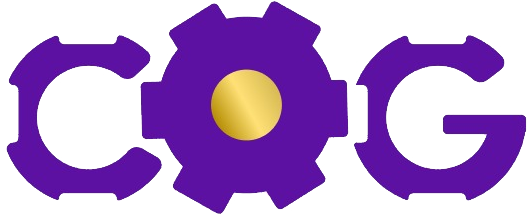In today’s world, having a strong commitment to Diversity, Equity, and Inclusion (DEI) isn’t just a nice-to-have—it’s a must-have. But let’s be real: crafting DEI strategies that stick can feel like navigating a maze with a blindfold. We want our DEI plans to be more than just checkboxes or buzzwords. We want them to bring about real, lasting change. This blog is here to guide you with actionable tips and insights to develop DEI strategies that truly resonate and sustain. So, get ready to shift your organizational culture towards a more diverse, equitable, and inclusive future!
Understanding DEI Fundamentals
Before diving into how you can craft DEI strategies that stick and spark meaningful change, let’s get a grip on the fundamentals. DEI isn’t just a trendy acronym to toss around—it’s a vital part of creating a workplace where everyone feels valued and can thrive.
Defining Diversity, Equity, and Inclusion
Let’s break down these three crucial components:
– Diversity is all about representation. It’s the mix of different races, genders, ages, sexual orientations, abilities, and backgrounds in your organization. Think of diversity as being invited to the dance.
– Equity ensures fairness by acknowledging that not everyone starts from the same place. It’s about leveling the playing field by providing resources tailored to individual needs. If diversity is the invitation, equity is getting help to learn the dance steps if you need it.
– Inclusion focuses on creating environments where differences are not just present but are valued and harnessed. It’s about everyone at the dance being asked to join in, having a good time, and feeling like they belong.
Why DEI is Critical for Organizations
Why should your organization take DEI seriously? Well, DEI isn’t just the right thing to do—it’s also smart business. Here’s why:
1. Improved Performance: Diverse teams bring varied perspectives, which can lead to more innovative solutions and better decision-making.
2. Talent Attraction and Retention: A strong DEI strategy makes your organization more attractive to a broader talent pool. Plus, when employees feel included, they’re likely to stick around longer.
3. Enhanced Reputation: Companies that are known for their DEI efforts often find themselves with a better public image and stronger customer loyalty.
4. Increased Market Reach: Understanding and embracing diversity can help you connect with diverse markets and audiences, driving business growth.
Assessing Your Current DEI Status
Now that you know what DEI is and why it’s key to success, the next step is to assess where your organization stands. Understanding your current status helps you create strategies that are both relevant and effective.
Conducting a DEI Audit
A DEI audit is your first port of call—think of it as a health check for your organization’s culture. It’s a structured process that evaluates policies, practices, and the general atmosphere regarding diversity, equity, and inclusion.
– Review Policies: Take a close look at your hiring practices, promotion processes, and pay structures. Are they fair and equitable?
– Analyze Diversity Metrics: Collect data on the demographic makeup of your organization. How diverse is your leadership team compared to the whole workforce?
– Evaluate Training Opportunities: Are there adequate programs in place to educate your staff about DEI issues?
Identifying Gaps and Opportunities
Once you’ve completed your audit, it’s time to identify where improvements can be made. This involves spotting both the gaps you’re currently facing and the opportunities to boost your DEI efforts.
– Gap Analysis: Identify areas where your organization falls short, such as a lack of diverse representation in leadership roles or insufficient access to career development for minority groups.
– Opportunities for Growth: Consider new initiatives or programs that could enhance your DEI landscape, like mentorship programs for underrepresented employees or developing a diversity council.
Gathering Employee Feedback
Lastly, turn to an invaluable resource: your employees. Their experiences and insights are crucial in shaping a DEI strategy that truly resonates.
– Surveys and Focus Groups: Conduct anonymous surveys and organize focus groups to understand employee perspectives on DEI within your organization.
– Open Forums: Encourage open dialogues about DEI. This not only helps gather insights but also strengthens a culture of transparency and trust.
By getting clear on where you currently stand, you’ll have a firm foundation for crafting DEI strategies that are not just well-intentioned proposals, but practical plans that can bring real change.
Crafting DEI Strategies
Creating an effective Diversity, Equity, and Inclusion (DEI) strategy is a journey that requires commitment and a clear roadmap. It’s about setting a strong foundation upon which meaningful, lasting change can be built. Here’s how to start building that foundation.
Setting Clear and Measurable Goals
Before anything else, it’s essential to set clear and measurable goals for your DEI strategy. Think of these goals as your North Star; they guide your efforts and keep you on track. Start by analyzing your organization’s current DEI landscape to identify areas that need improvement. From there, define specific objectives that address these needs.
– Specific: Instead of vague aims like “increase diversity,” opt for specific targets such as “increase racial diversity in leadership roles by 20% over the next two years.”
– Measurable: Ensure you can track progress with metrics or indicators.
– Achievable: Goals should be challenging yet attainable given your resources and context.
– Relevant: Make sure the goals align with the broader mission and values of the organization.
– Time-bound: Assign deadlines to your goals to maintain momentum and urgency.
Developing Inclusive Policies and Practices
Policies and practices are the bedrock of any DEI strategy. Examine existing policies to ensure they support inclusivity and address potential biases. This might include updating recruitment and hiring processes to eliminate bias or crafting comprehensive anti-discrimination policies.
– Recruitment: Implement blind recruitment processes to minimize conscious and unconscious bias.
– Flexible Work: Introduce flexible working arrangements to accommodate the needs of a diverse workforce.
– Feedback Channels: Create safe spaces for employees to provide feedback and report discrimination without fear of retribution.
Aligning DEI Efforts with Company Values
Aligning DEI efforts with the core values of your company ensures these initiatives are not just checkboxes to tick off but are intrinsically integrated into the organizational culture. This means recognizing that DEI is linked to the organization’s vision and is not just an HR initiative.
– Cultural Integration: Reflect on how DEI initiatives fit into the broader culture and operations of the company.
– Collaboration: Work with different departments to ensure seamless integration of DEI principles in every facet of the organization.
– Communication: Consistently communicate how DEI supports the company’s mission and benefits everyone.
Implementing DEI Initiatives
Once your DEI strategies are in place, the next step is bringing them to life through thoughtful implementation. This is where the real work begins, and it requires enthusiasm and dedication.
Training and Education Programs
Education is a powerful tool in transforming workplace cultures. Implement training programs tailored to all levels of the organization to promote awareness and understanding.
– Workshops: Organize regular workshops on topics like unconscious bias, cultural competency, and equity.
– Continuous Learning: Encourage employees to engage in self-education with resources like books, webinars, and online courses.
– Interactive Sessions: Use role-playing and discussions to encourage active participation and reflection.
Leadership Commitment and Accountability
Leaders play a critical role in driving DEI efforts. Their commitment can inspire and influence change across the organization. But commitment alone isn’t enough—there must also be accountability.
– Role Models: Leaders should model inclusive behavior and decision-making.
– Accountability: Establish clear accountability mechanisms for leaders to ensure progress towards DEI goals.
– Visibility: Leaders must visibly participate in DEI initiatives to show their importance and commitment.
Building Diverse Teams
Diversity in teams brings a wealth of perspectives and experiences that can drive innovation and creativity. It’s crucial to focus on building teams that reflect the diverse society in which we live.
– Intentional Hiring: Actively seek diverse candidates through partnerships with diverse networks and institutions.
– Mentorship Programs: Encourage mentorship opportunities to support the growth and advancement of underrepresented employees.
– Inclusive Communities: Foster an inclusive environment where every team member feels valued and heard.
By carefully crafting and implementing DEI strategies, organizations can foster an inclusive culture that not only works in theory but sticks in practice, creating a more equitable and engaging workplace for everyone.
Measuring and Sustaining DEI Efforts
Creating impactful Diversity, Equity, and Inclusion (DEI) strategies is a rewarding journey, but the true test lies in making them last and evolve. Here’s how to ensure your DEI efforts remain robust and effective.
Tracking Progress and Outcomes
First things first, establish clear metrics for success. Without them, it’s hard to know if you’re moving in the right direction. Consider these steps:
– Define Key Performance Indicators (KPIs): For each DEI goal, identify specific, measurable indicators that align with your organization’s mission.
– Regular Assessments: Schedule routine check-ins, such as quarterly reviews, to evaluate DEI progress. Use surveys, feedback loops, and performance data to capture a comprehensive view.
– Transparent Reporting: Share the results with your team and stakeholders to foster a culture of openness and accountability. This promotes trust and encourages collective responsibility.
Adapting Strategies for Continuous Improvement
Even the best plans need tweaking. The workplace environment and team dynamics are always evolving, so it’s essential to keep your DEI strategies flexible:
– Feedback Mechanisms: Create spaces for employees to share their experiences and suggestions. Regularly check in through one-on-one meetings or focus groups.
– Reflect and Adjust: Analyze feedback and performance metrics. If something isn’t working, don’t be afraid to pivot. Learning from these insights will keep your strategy relevant.
– Stay Educated: Keep up-to-date with the latest DEI research, trends, and best practices. Attend workshops or webinars to bring fresh ideas to the table.
Celebrating Wins and Learning from Challenges
Positive reinforcement and reflection play vital roles in sustaining DEI efforts:
– Recognize Achievements: Celebrate milestones and successes, big or small, to maintain momentum. Whether it’s an all-hands meeting shout-out or a dedicated celebration event, acknowledging progress boosts morale.
– Analyze Challenges: Instead of seeing setbacks as failures, approach them as learning opportunities. Conduct debrief sessions to identify what didn’t work and brainstorm solutions.
By consistently measuring, adapting, and celebrating, your DEI strategy will not only stick but thrive, driving meaningful change across your organization.
Crafting DEI strategies that stick is more than just checking boxes—it’s about creating meaningful, lasting change. By setting clear, achievable goals and fostering an inclusive culture, your organization can cultivate a diverse work environment where everyone thrives. Remember to engage in ongoing learning and be open to feedback to keep your DEI efforts dynamic. By continuously evaluating progress, your DEI strategies will not only stick but also inspire and drive positive change for years to come.




 Image courtesy:
Image courtesy: 

 Image courtesy:
Image courtesy: 




